Reichsbahn 1934 Pattern Visor Cap
SKU: 72.GOR.01.01.01.002
Estimated market value:
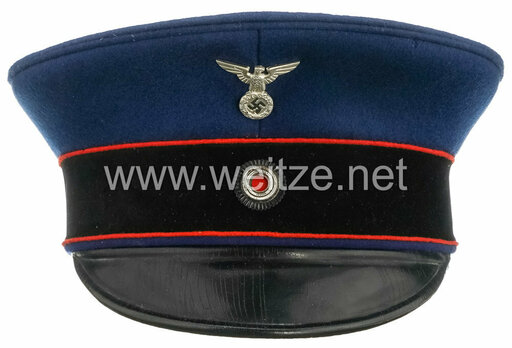
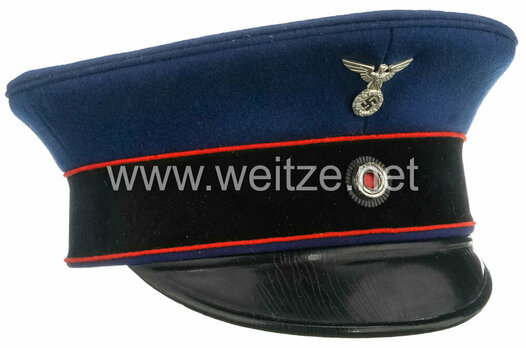
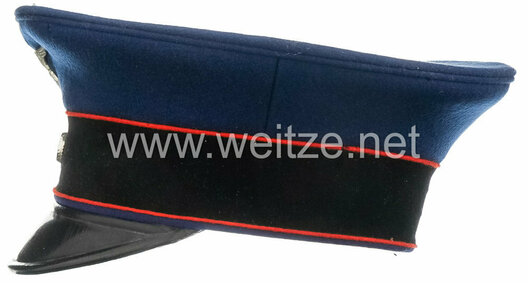
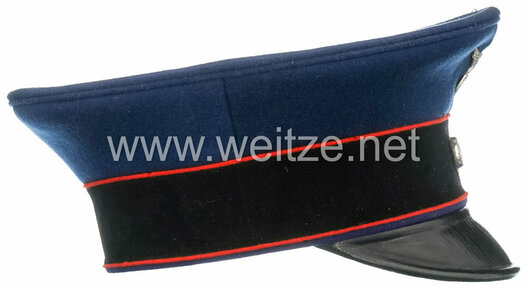
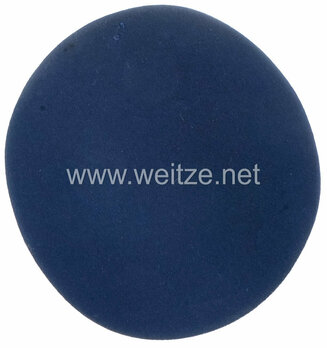
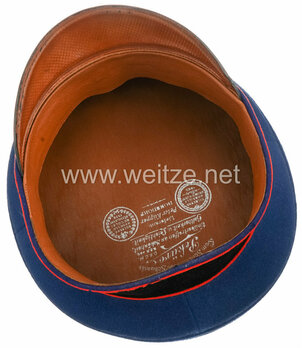
Estimated market value:
Attributes
History
The Deutsche Reichsbahn (German National Railway) was created after the First World War in 1920 by combining the formerly independent state railways of the abolished German Empire into a national organisation. Under NSDAP rule, the German state railway system was reorganised in the 1930s to better meet the needs of the economy and to prepare for war, eventually supplying the front lines with soldiers and supplies. The Reichsbahn also had an infamous role to play in the Holocaust, transporting Jews and other “undesirables” to concentration and extermination camps.
The Bahnschutzpolizei (railway protection police) was founded in 1939 as a merger of the Bahnpolizei (railway police) and the Reichsbahnschutz (railway protection force), the latter being regular railway employees that, beyond their normal functions, additionally served as railway security personnel.
The Bahnschutzpolizei as a railway sub-organisation was made up of policemen that were employed by the Reichsbahn rather than the German police force. Their task was to ensure railway safety as well as preventing railway-related espionage and sabotage. During the war, most members of the Bahnschutzpolizei served in the occupied Eastern European territories.
The visor cap worn by Reichsbahn personnel prior to 1930 was either blue or red with a black cap band and red piping above and below it. It featured a black visor and no chin straps or cords. A national cockade was attached to the cap band and a state cockade at the top of the cap with a gilt metal insignia above it in the form of a wheel viewed from the front with a wing attached to each side.
This cap was worn until new regulations in June of 1934 dictated that the state cockade and winged wheel insignia were to be discontinued and replaced with a silver-coloured Third Reich “political” style national eagle emblem with swastika.
New regulations from July 1935 introduced chin straps and chin cords, depending on rank.
The highest ranks down to and including pay group 7 personnel wore gold-coloured chin cords interwoven with dark blue.
Pay group 7a to 11 personnel wore alternating gold-coloured and dark blue chin cords.
Pay group 12 to 17 personnel wore dark blue chin cords with interwoven gold.
Members of the lowest ranks wore black leather chin straps.
Bahnpolizei visor caps were introduced in 1936/37. They are very similar to regular Reichsbahn visor caps, with a few key differences.
The caps are dark blue and feature aluminum cord piping for higher ranks (Streifdienstleiter to Streifabteilungsführer). Lower ranks (Oberstreifenführer to Streifer) wore red piping instead. Initially, the piping was only found above and below the black cap band, but eventually the crown of the cap was also piped.
The higher ranks wore chin cords made of aluminum cord with interwoven black cord, while the lower ranks wore black leather chin straps.
Higher ranked Bahnpolizei members wore a hand-embroidered winged wheel and oak leaf wreath insignia complete with a cockade on the cap band. Lower ranked members wore the same insignia, but made of silver-coloured metal. At the top of the cap, all ranks wore a metal eagle emblem.
Bahnpolizei visor caps were also produced in a field-grey version with a dark green or black cap band. Piping was silver-coloured for higher ranks and black for lower ranks.
Bahnschutz members wore the same cap as Bahnpolizei members. The winged wheel insignia was made of silver-coloured metal for Enlisted Ranks, hand-embroidered from silver-coloured aluminum cord for Officer ranks beginning with Oberzugführer/Abteilungsführer, and gold-coloured hand-embroidered for higher leader ranks beginning with Gruppenleiter.
Enlisted Ranks wore a black leather chin strap, while Oberzugführer, the highest enlisted rank, wore an aluminum chin cord interwoven with blue or black. Officers beginning with Abteilungsführer wore an aluminum chin cord.
With the amalgamation of Bahnpolizei and Bahnschutz to Bahnschutzpolizei in 1939, a cap in the Bahnschutz design with slight differences was elected as headgear.
Piping was grey for Enlisted Ranks, silver-coloured for Officers, and gold-coloured for higher leaders.
The insignia remained the same, except that a gold-coloured eagle emblem was introduced for higher leader ranks. They were also granted permission to wear a gold-coloured chin cord.
New regulations for Reichsbahn visor caps were introduced in February of 1941. Red piping was added to the cap crown. A new insignia was introduced as well, made up of a large winged wheel, a wheel viewed from the front with a wing attached on each side, with the cockade placed above the wheel and in between the wings.
Gold-coloured piping was introduced in July of 1941 for members of pay groups 5 and above.


Comments
Sign in to comment and reply.


Scroll Top